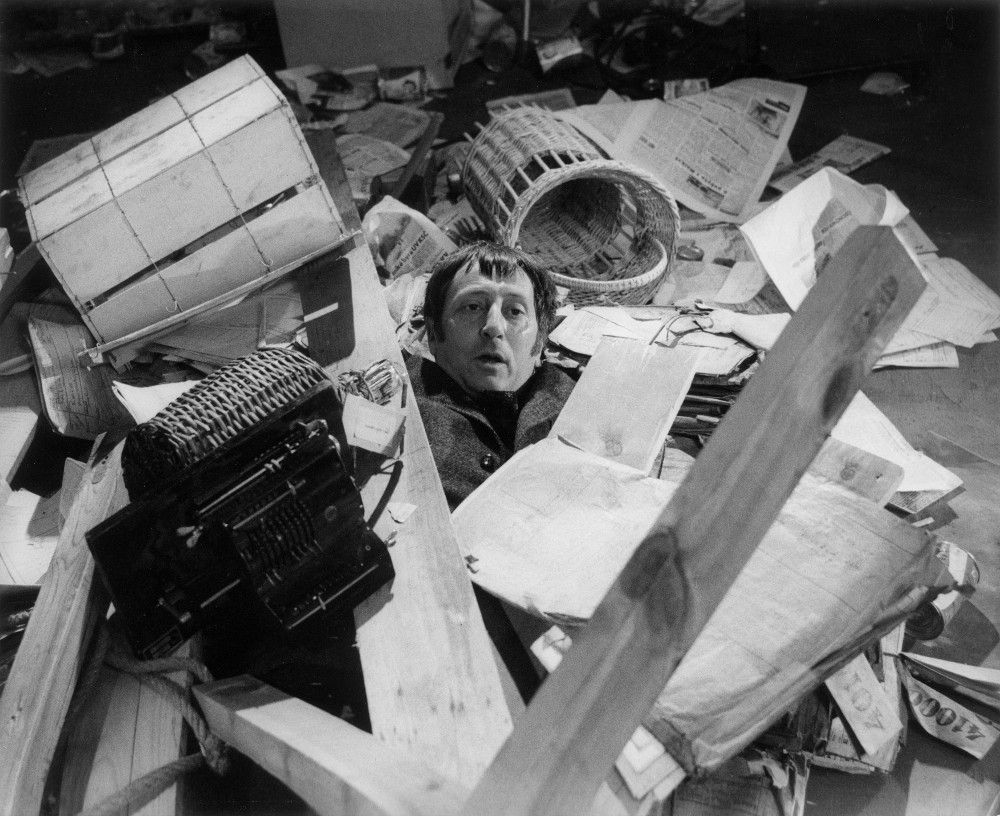A Case for the New Hangman
Czechoslovakia 1969, 102 min.
Director and screenplay: Pavel Juráček. Director of photography: Jan Kališ. Film editor: Miroslav Hájek. Music: Luboš Fišer. Architect: Milan Nejedlý. Cast: Lubomír Kostelka, Pavel Landovský, Klára Jerneková, Milena Zahrynowská, Luděk Kopřiva, Slávka Budínová, Pavel Bošek, Miroslav Macháček, Věra Ferbasová, Eduard Dubský, Jiřina Jirásková, Jiří Hálek, Radovan Lukavský, Nataša Gollová, Jiří Hrzán.
The Lemuel Gulliver of Dlouhá Street takes an unexpected journey to the flying island of Laputa, in the realm of Balnibarbi, and back again. The parable about a totalitarian system, where bizarre laws are in force and unwritten rules are adhered to, mixes with a fantastical spectacle in which “dreams touch the world and the world touches dreams”. In twelve chapters, the Kafkaesque motion picture, Case for the New Hangman, tells the timeless tale of a foreigner who brings hope and excitement to the stagnant waters of Balnibarbi whereupon, instead of being received as a guest, he is treated with suspicion.
This is one of those rare films that one returns to again and again throughout a lifetime for inspiring messages and words of caution. Although it is a variation on the third book of Gulliver’s Travels, by Jonathan Swift, it bears closest resemblance to the world of Franz Kafka. […] And just as Kafka’s The Trial can be understood as a parable on guilt, fate and death, Case for a Rookie Hangman can be perceived as the journey of a thirty-five year old man (crisis age) into his innermost self. Or else as an enormous meditation on time; the hands of the clock, turning backwards (“it’s not enough to hear them tick?”), can refer to the obscurant Balnibarbi civilization on the one hand and a return to childhood, driven by fear of aging and death, on the other.
[Jaromír Blažejovský (1993): The Story of Lemuel G. Kino 48, no. 4 (23. 2.), pg. 31.]
